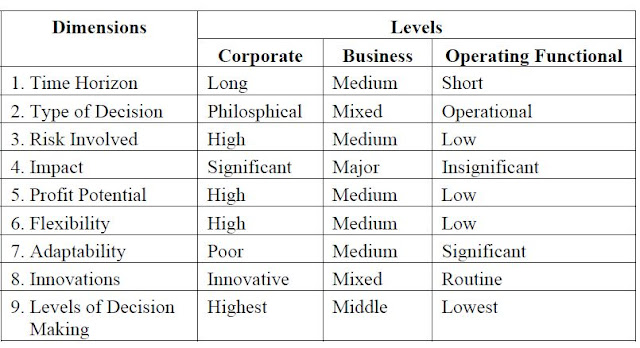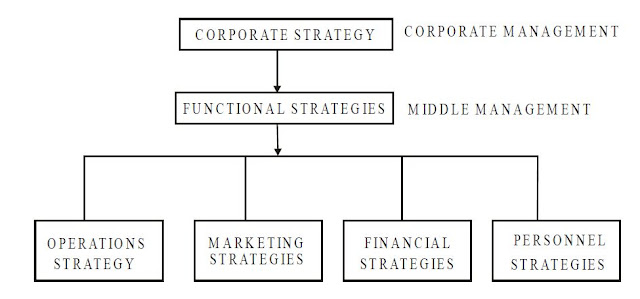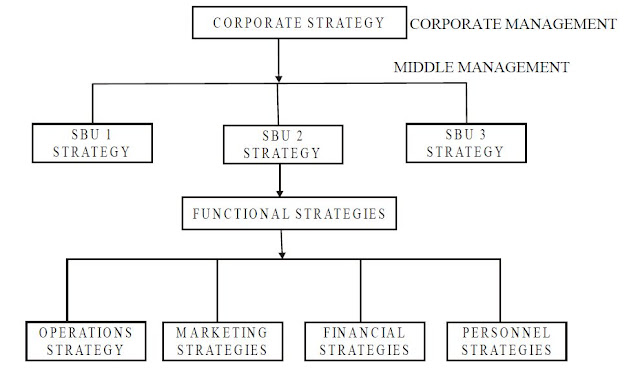Corporate strategy may exist at three levels in an organization. They may be at corporate level, business level and operating level. In this section, a brief description of these three levels of strategy is given:

management. At the corporate level, the board of directors and chief executive officers are involved in strategy making. Corporate planners and consultants may also be involved. Mostly, corporate level strategies are futuristic, innovative and pervasive in nature. Decision like spreading the range of business interests, acquisitions, diversification, structural redesigning, mergers, takeovers, liquidations come under corporate level strategies.

strategic decisions. These strategies relate to a unit within an organization. At business level, the objectives are formulated for SBUs and resources are allocated among functional areas. These strategies operate under the defined scope of corporate level strategy. Business level strategy is more specific and action oriented. It relates mainly with “how” aspect. The corporate level strategy is related to “what” aspect of corporate strategy.
Operating Level Strategy:- This level of strategy is at the operating end of the organization. It is also known as functional level strategy. These decisions relate to training, investment in plant, advertising, sales promotion, total quality management, market segmentation etc. This decision is almost tactical. They deal with a relatively restricted plan providing objectives for specific function, allocation of resources among different operations within the functional area and coordination between them.
The following table shows distinctive characteristics of the three levels of strategy:
 |
| Statategic decisions at different levels of corporate strategy |
The strategies at different levels are interrelated to each other. The interrelationship between corporate strategy and functional strategies is shown in figure A.
 |
| Figure A: Corporate and Functional Strategies in Single SBU Firms |
Figure B shows the relationship between corporate, business and functional strategies.
 |
| Figure B: Corporate SBU and Functional Stratgies in Multiple SBU firms |
The example of first category can be that of Reliance Industries Ltd. It is a highly integrated company producing textile yarns and a variant of petro chemical products. The second figure may be related to Ashok Leyland Ltd., which is engaged in manufacturing and selling of heavy commercial vehicles. The SBU concept was considered in this case.
Be the first to comment on "The Three Levels of Corporate Strategy"